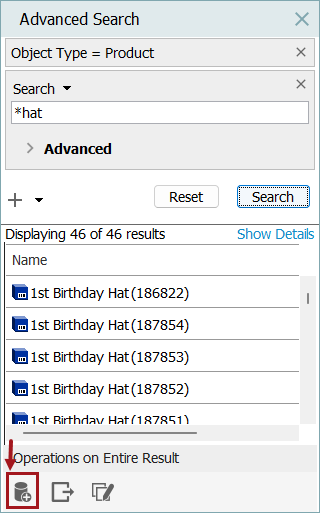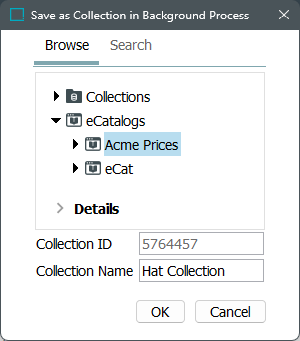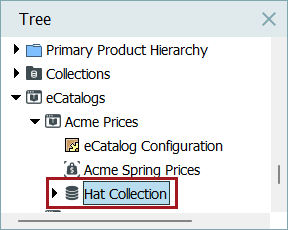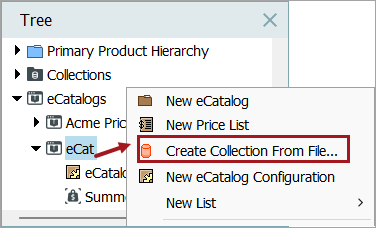There are two methods of selecting the products that should be part of an eCatalog:
-
Use the contents of the price list itself, which is achieved by selecting the 'Act as selection list' on the price list. Refer to the Creating a Price List topic for more information.
-
Link a collection to your eCatalog.
In the workbench, collections can be created in two ways:
- Using the Advanced Search tab, perform a search, and create a collection of the results. This creates a dynamic product selection for the catalog that can later be refreshed.
- Using an import file, create a collection of the contents. This creates a static product selection for the catalog. If you later want to alter the product selection, you will have to delete this file-created collection and create a new one.
For information on how to create a collection using either method, refer to the Creating Collections topic in the Getting Started documentation.
Note: It is strongly recommended to use a dynamic collection created from a search, since this collection can be refreshed every time the eCatalog is exported.
This topic explains how to add collections to eCatalogs.
Add a Dynamic Collection to an eCatalog Through Advanced Search
To add a dynamic collection to an eCatalog created from a search:
- On the Advanced Search tab, search to locate the products that you want to be part of the eCatalog.
- When the search is complete, click the 'Save as Collection' button
 .
.

- In the 'Save as Collection in Background Process' dialog, browse or search for the eCatalog that you want to add the collection to.

- For the 'Collection Name' parameter, add a Name for the new collection (IDs are autogenerated).
- A background process launches. When complete, the collection is added to the eCatalog.

Add a Static Collection to an eCatalog Through a File
To add a static collection to an eCatalog created from a file:
- Right-click on your eCatalog and select 'Create Collection from File'.

- In the 'Create Collection From File' dialog, locate the file to be imported.

- For the Collection Name parameter, add a Name for the new collection (IDs are autogenerated).
- For the File Contains parameter, select if the import file contains IDs of products, classifications, or assets.
- Click OK to start a background process which will create the new collection.